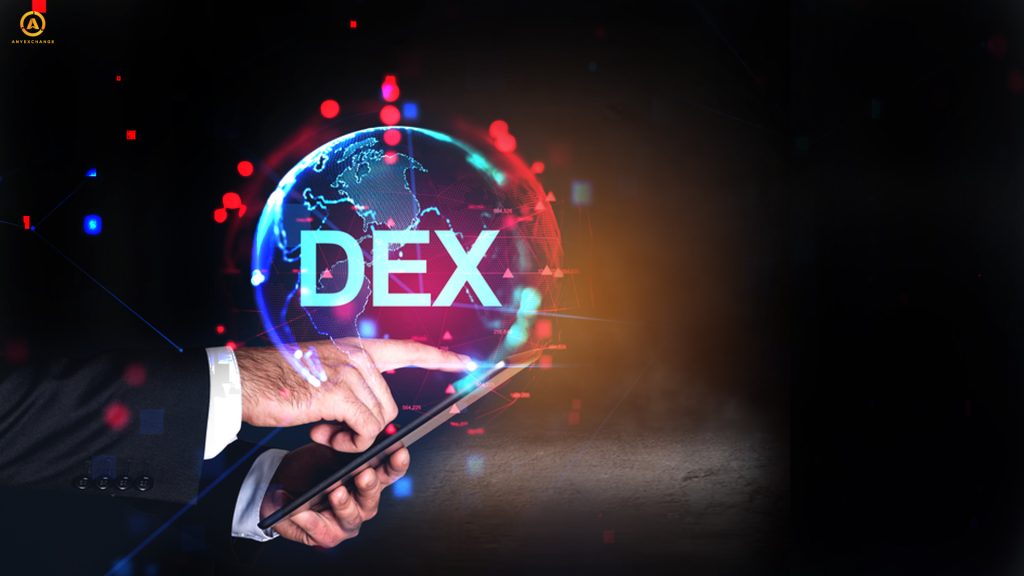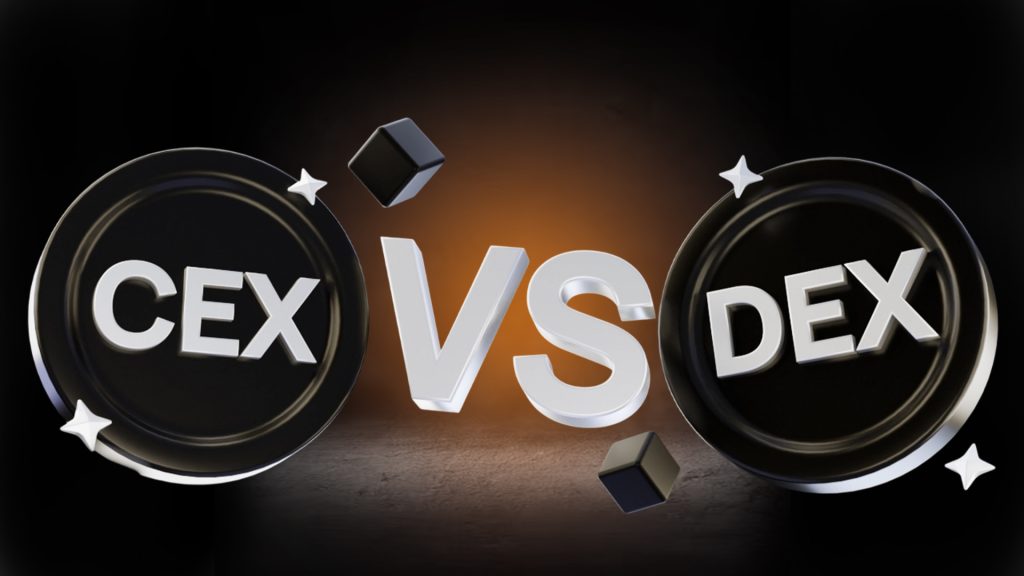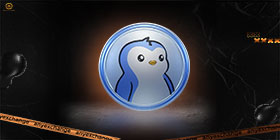
Decentralized Exchanges (DEX) are one of the most promising building blocks of the decentralized finance (DeFi) sector. As of today, there are 193 DEXs listed on CoinMarketCap with a combined market cap of approximately $46 billion and a daily trading volume of $8.5 billion. The most popular ones are Uniswap, Raydium, Jupiter, Stellar, dYdX, 1inch Network and PancakeSwap.
In this article we will look at the principles of decentralized exchanges, their advantages and disadvantages, as well as the degree and vector of DEX influence on traditional trading.
What are decentralized exchanges (DEX)?

A decentralized exchange (DEX) is an open-source blockchain platform for trading cryptocurrency assets, where transactions are conducted directly without an intermediary in the form of a trading systеm.
DEX essentially acts as a platform for placing and automatically searching for orders, which users access through mobile applications or browser versions.
The principles of decentralization are implemented through the use of smart contracts and other software algorithms. The role of smart contracts in DEX is to provide transparent terms for peer-to-peer trading and direct execution of transactions. Unlike centralized exchanges, DEX does not store funds, collect personal information, or require KYC verification of users. To provide liquidity on decentralized exchanges, automated market makers (AMMs) are used instead of traditional market makers.
How do Automated Market Makers (AMMs) work?

AMMs are software algorithms that perform the functions of an order book used on traditional exchanges. AMMs do not require human intervention and are an algorithmic systеm for matching transactions, pricing and liquidity control based on mathematical principles.
In 2017-2018, during the ICO rush that brought thousands of new tokens to the market, the popularity of decentralized exchanges increased dramatically. The lion’s share of new assets were traded on DEX, as listing on CEX required a complex selection process based on strict criteria. During this boom, decentralized exchanges had many problems: low speed, insufficient liquidity, large spreads, and inadequate transaction fees.
And during this period, it was the use of AMM that served as an impetus for the qualitative evolution of DEX starting in 2018. Decentralized exchanges existed before, but despite all their advantages, they were not competitive with traditional exchanges, mainly due to low liquidity.
The use of automatic market making, with the replacement of the order book by liquidity pools, made it possible to create a truly decentralized architecture, significantly increasing the speed of transactions and reducing the cost of transactions.
After the AMM technology was successfully applied by Uniswap in the Ethereum network, the DEX AMM model became the basic one. It was copied and used by decentralized exchanges operating on other blockchains (BNB Chain, Solana, Cosmos, Terra, etc.).
The creation of automated market makers also accelerated the integration of DeFi and DEX, creating new opportunities. Thanks to AMM, it became possible to use staking and farming on decentralized exchanges: liquidity providers are automatically credited with native tokens, which can then be used for selling, sending to staking or voting in governance.
In 2021, with the development of synthetic (wrapped) tokens, a new generation of decentralized exchanges began to emerge. They also use automated market making technology, but at the same time, the ability to exchange cryptocurrencies from different networks was added.
Beginning in 2022, after the high-profile collapse of a large centralized exchange FTX, whose administration was caught misusing customer assets, user trust shifted even more toward DEX: traditional crypto exchanges experienced a capital outflow, and decentralized ones — a surge. The popularity of farming grew and trading activity increased. And after the situation with successful cyber attacks by hackers on crypto exchanges in 2023 was recorded, suddenly facts emerged that CEX cannot provide the necessary level of protection — their results in terms of damage from cybercrime are much sadder than those of decentralized exchanges. The increase in the number of hacks and the volume of funds withdrawn by attackers was proven by the data from the reports of Chainalysis and Cyvers.
Comparing DEX and CEX: pros and cons

The main difference between centralized crypto exchanges (CEX), such as Coinbase, Binance, Huobi, Bitfinex or Kraken, and decentralized ones (DEX) is that they are managed by legal entities operating within the legal framework of a particular jurisdiction. These legal entities receive profits, pay taxes, and are formally accountable to the government and users for their actions.
In addition, centralized exchanges hold (have access to) customer funds and can block them at their discretion or at the direction of regulators. In addition, all CEXs must “know their customer”, so the KYC process is mandatory on centralized platforms.
At the same time, DEX does not require verification, ensuring complete anonymity, and does not have the right to control funds – users’ assets are stored in personal cryptocurrency wallets. That is, in essence, DEX gives the user complete freedom and control, but at the same time places great responsibility on them for the safety of their funds.
Let’s consider what other features are advantages or disadvantages of DEX.
Advantages of DEX over centralized exchanges
- Security on DEX: Asset protection is ensured by the fact that decentralized exchanges do not store user funds, so they cannot be blocked or withdrawn without the owner’s knowledge. The risk of losing funds due to hacking of the crypto platform is eliminated, as the user retains control of their private keys.
- Anonymity: registration and verification are not required on this type of exchange, transactions are completely anonymous, therefore the user’s personal information does not appear there and cannot be used to commit unauthorized actions. Customers are identified by blockchain addresses and non-custodial wallets connected to the platform through the application.
- Low cost: commissions and expenses on decentralized exchanges are typically lower than on centralized exchanges. Choice of cryptocurrencies: Such applications usually offer a wider range of tokens (including those that may not be available on CEX).
- Fast listing: New coins appear on DEX almost instantly, as the exchange only verifies basic criteria.
- Ability to participate in the development of the exchange: Governance tokens give the right to vote, so users can influence the development of the platform.
Risks and challenges of using DEX
- Lack of interoperability. Not all decentralized exchanges allow transactions outside of the parent blockchain.
- Limited functionality. DEX does not offer some trading options that traders are accustomed to (such as margin trading, fiat transactions, etc.).
- Lack of liquidity. Liquidity on decentralized exchanges is not always stable. In such cases, there is a risk of price volatility.
- Risk of fraud with new tokens. DEX has very soft requirements for new cryptocurrencies before listing. Therefore, there is a risk of fraud, issuance of counterfeit tokens and other types of fraud.
- Being in a “gray area”. Today, decentralized exchanges are virtually unregulated; in some jurisdictions, they are prohibited altogether. Regulators are in the process of finding ways to control and monitor them.
How to trade on a decentralized exchange

- To choose the best decentralized exchange for trading, study the recommendations of analysts, articles and reviews on specialized resources and reviews of popular DEX: Uniswap, SushiSwap, PancakeSwap and others.
- Think about how to ensure security when trading on DEX. Before you start working with decentralized exchanges, you need to make sure that the wallet is reliable (in this case, you need a non-custodial or hardware crypto wallet) and that there is a secure way to store keys.
- Study the liquidity indicators, the average trade closing time and the fees charged to see if it suits your needs.
The mechanism of interaction with DEX itself is as follows:
- You connect a cryptocurrency wallet to the decentralized exchange application.
- You deposit funds into the liquidity pool and place an order.
- Then an automated search for a match with another order takes place.
- The smart contract executes the terms of the trade and closes it.
Which exchange to choose: CEX or DEX?
Centralized platforms are more suitable for active trading. They currently offer a wider range of tools for short-term trading. For example, different types of orders (such as Buy Limit, Stop Loss, Take Profit, etc.), the ability to conduct margin trading, futures and options trading. CEX also offers higher liquidity and stable order execution speed.
For less temperamental investors who prefer long-term strategies with a minimum number of movements, DEX will be a more favorable option. In this case, the assets will be held safely in your personal wallet for the desired period of time.
DEX is also ideal for venture investors – access to new crypto assets on DEX is available almost immediately after their release.
And of course, if anonymity is on your list of top priorities, DEX is the best way to buy cryptocurrency without revealing your identity.
The future of decentralized exchanges in the crypto industry

The benefits of decentralized exchanges, such as increased privacy and extensive listings, undoubtedly attract users. And large CEXs prefer not to compete with DEXs, but to integrate them into their ecosystems. In such cases, the user gets maximum options for trading and investing. It is likely that over time we will see an increasing synergy between the two technologies.
Trends and innovations in the DEX sphere will most likely be implemented in such areas as improving interoperability between different blockchains, simplifying the user interface, and increasing the availability of functionality and tools for trading.
As DEXs are 100% successful in implementing the main idea of decentralization, they will continue to be in demand among their supporters. With global efforts to regulate the crypto industry, decentralized exchanges will become increasingly attractive to traders seeking greater privacy, security and control.
Thank you for reading our article. Invest safely and profitably!
AnyExchange is a cryptocurrency exchanger that allows you to convert digital assets at the best exchange rate. Our platform completes transactions with both electronic and cash money. We cooperate with leading payment systems and process payments with bank cards. Through our platform, you can make fast, anonymous and secure money transfers around the world.





